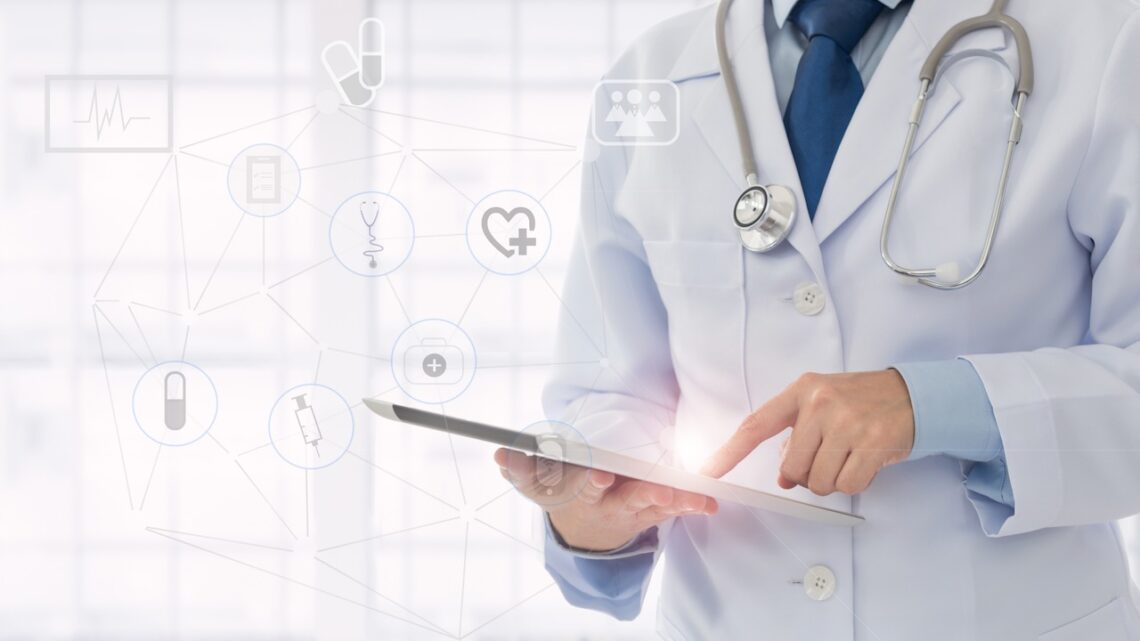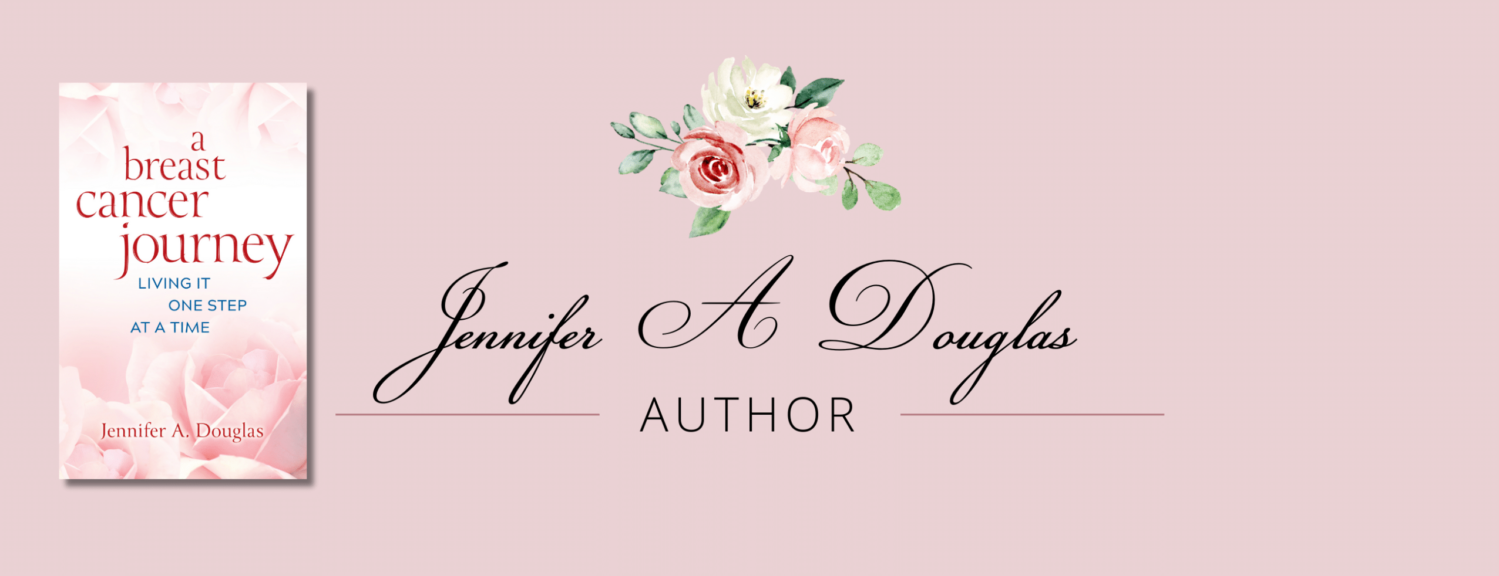
All About Core Needle Breast Biopsies
Core Needle Breast Biopsies are a tool that doctors use to determine if there is cancer located in your breast. If you have imaging results that indicate potential malignancy, the next step is usually a biopsy.
Note: I am not a medical professional. I share my patient experience with you. Please follow the advice of your providers.
Throughout the course of my diagnosis process last year, I ended up having a total of 5 biopsies. Only one of them indicated DCIS, early-stage breast cancer.
Heading into my biopsies, I wasn’t sure how each of the procedures would go. I had had a previous series of biopsies, but these were quite different.
I’d like to help you prepare for the core needle biopsy procedure so that you know a little more about it before you experience it.
Local Anesthetic
These biopsies can be performed under local anesthetic. This means that you will be awake during the procedure. The advantage of this is that you can have a biopsy without needing to fast beforehand. Also, in many cases, the recovery is faster because you will not be under general anesthetic.
The disadvantage to the fact that this procedure can be performed under local anesthesia, is that you are awake! You will be very aware of what is going on during the biopsy. You will hear the radiologist talking. You will need to hold still during the procedure. Additionally, you will hear the whir or the click of the biopsy needle taking samples.
I tend to pass out during certain medical procedures. Getting blood drawn is a challenging process for me. Sometimes I do ok, and other times I will faint.
During my first biopsy, I also discovered that I can pass out during that procedure as well!
I’ll share a little more about that story in just a little bit.
What Is It Like to get a Local Anesthetic?
At some point in the biopsy procedure, the radiologist will numb you. This is so that you don’t feel what is going on during the biopsy procedure.
Numbing is a two-part process. The first part is the most uncomfortable, at least in my opinion. The radiologist will say that you’ll feel a pinch and a burn. This is the first shot of numbing. I hated this part of the procedure because it hurt!!! If you’ve ever had a shot of novocaine during a dental procedure, it is a little like that, but worse.
After a few minutes, the radiologist will then move to the next step of the numbing, which will involve more poking. But, you won’t feel pain during this part because the first part of the numbing has taken effect.
As the radiologist is numbing you make sure that you aren’t feeling pain. The providers do the best they can to make sure you are comfortable and pain-free, but they can’t be sure. Do not tough this part of the procedure out. Say something if you’re feeling it.
After the second part of the local anesthetic procedure is completed, there will be a pause in the process. This is so that the radiologist can verify the location of the biopsy, and also give the local anesthesia time to take full effect.
Different Types of Core Needle Biopsies:
There are many different types of biopsies that can be performed, and lots of different names that you might hear when the procedure is being ordered for you. I’m going to break down the biopsies into 3 different types, based on how the radiologist locates the area. When your surgeon orders a biopsy, ask him which of these types he will be ordering.
Ultrasound-Guided Biopsy
In this biopsy, the radiologist will use an ultrasound wand to locate the area needing a biopsy. You will begin this procedure by going into an ultrasound room and lying down on a table. In my biopsies, I was laying down on my back, but it is possible that your positioning may be different.
A technician will get you settled and then use the ultrasound wand to locate the area to be biopsied. She will then match up the biopsy location to the previous imaging you have had.
Once the location is confirmed, then the radiologist will come in. The radiologist will locate the area herself, and then the numbing process will begin.
After the area is numb, the biopsy process will begin. The radiologist will use the ultrasound wand to find the area and then will use the biopsy tool to begin taking samples. There will usually be one location that the core needle biopsy tool is stuck into you. You won’t feel this because you’re numb!
At this point, I recommend closing your eyes and ignoring the process as much as possible. Take some deep calming breaths and visualize your happy place.
Your radiologist will likely warn you when the samples will be collected. This is because you will hear a loud click during each sample gathering. Depending on the size of the area in question, the radiologist may move the needle around in your breast. You may feel pressure but you shouldn’t feel pain. If you feel pain, say something!!!!
After the radiologist is confident that the appropriate number of samples has been collected, then she will use the same tool to place a marker or a clip.
Then, the radiologist will remove the biopsy tool from your breast. She will put pressure on the location to minimize any bleeding. She will likely use steri-strips to close up the area. You are almost done!
The last step in the biopsy procedure is to have a gentle mammogram. Yes, you will be getting squished after getting a biopsy. The purpose of this mammogram is to make sure the clip has been appropriately placed.
Mammogram or Stereotactic Biopsy
If the area in question is one that is only visible under a mammogram, then the radiologist will need to do your biopsy with the aid of a mammogram and a specialized computer. In my case, I had calcification that was only visible through a mammogram.
If a mammogram guided biopsy is in your future, there are two different ways that you might be positioned for this procedure.
Some locations have a table that you lie down on face first. There are holes in the table for your breasts to hang through. The mammogram plates will be located underneath the table.
Other locations have a chair that you will sit on, and then the mammogram machine will be in front of you. This was how my medical office had the equipment set up.
In the case of a mammogram guided biopsy, you will first be positioned by the technician. Her job will be to get you seated or lying down and get the breast in question under compression. She will make sure that the correct area of your breast is near the hole for the biopsy tool to go. This sometimes takes a little bit of adjusting while the tech compares your initial imaging with the location of your breasts in the equipment. Once you are in place, then the radiologist will come in.
The radiologist will check your initial imaging with the computer and input the correct coordinates for the biopsy tool. This procedure uses a computer to help the radiologist remove tissue from just the right location.
After the equipment is in place, then you will be numbed so that you don’t feel pain. You will be feeling pressure throughout this process because you’ll be compressed under the mammography plates during the biopsy.
Once the location is confirmed and the radiologist is confident the local anesthesia has taken effect, then the biopsy will begin.
The tool used to gather the sample, at least in my office, was linked up directly to a computer. The device was inserted, and then samples were taken. The samples are then tested to make sure that they have the calcifications in question.
This procedure was really hard for me. I was listening to the radiologist and the nurse talk, then I started to feel dizzy and woozy. I had just enough presence of mind to earn them I was going to pass out, and then the next thing I knew I was being held up by the radiologist and the nurse and was sipping juice. I opened my eyes, looked at them and asked if they got the sample.
Thankfully the answer was yes!
The doctors removed the compression, and then applied pressure to the area to stop the bleeding.
I was in tears after this biopsy because I had passed out. I’m so grateful to the wonderful team around me who helped me calm down, regain my composure, and prepare for the next biopsy I had that day.
This was not my favorite type of biopsy…..
MRI Guided Biopsy
Some imaging abnormalities can only be seen under a breast MRI. If the radiologist wants to identify exactly what those cells are, then an MRI guided biopsy will be ordered.
This biopsy was the longest of all the biopsies that I had because of the extensive preparation needed before the biopsy can be performed.
You will need to get into the MRI safe clothing provided to you by the imaging center, get an IV for contrast placed, and then get set up on the breast MRI table. You’ll be lying down with your breasts hanging down into the holes.
Make sure you are comfortable and that you ask for music, aromatherapy, or blankets before the procedure begins. Oh, and don’t forget to use the bathroom before you begin this procedure! You’ll be lying there for a while.
The technician will begin by doing an MRI to see where the area is located. The breast in question will be compressed so that it doesn’t shift around. In my case, the technician and the radiologist had to try several different configurations to get just the right placement.
I had my earplugs in and was lying on my stomach on the table while they were getting things positioned right.
Then, the radiologist will numb your breast for the procedure.
Once the breast is compressed and you are numb, you’ll be sent into the MRI tube for final position verification.
Then, the radiologist will slide the table out of the MRI tube and perform the biopsy. This one sounds like a drill. I was told it was a whirring sound. But, it sounded like they were drilling out my tissue.
So. Much. Fun.
But, I didn’t pass out during this one. I think that it is easier for me to stay conscious when I’m laying down.
After the sample has been taken, and the clip has been placed, the radiologist will remove the device and apply pressure to the area. She’ll use steri strips to cover the biopsy area.
After all of these biopsies, you can expect to get a mammogram afterward to verify clip placement.
Once that mammogram is done, you’ll likely be given a cold pack, or perhaps a nifty bandage with a cold pack built-in, and then be given the all-clear to go get dressed and head home.
I’ll talk in-depth about biopsy recovery in another post, but you should get a nice instruction sheet from the radiology office about how you are to care for your wound and manage pain after the biopsy.
Everyone recovered differently from these procedures. I was usually sore and very tired for a few days after. Once I got to a week out from the biopsy, I felt like myself again.
I hope this has helped you prepare yourself for what to expect during a breast biopsy. I’m definitely not a fan of these procedures, but they are an important part of the diagnosis process.
Jennifer Douglas
Jennifer is the author of "A Breast Cancer Journey: Living it One Step at a Time," breast cancer survivor, and patient advocate. Her book, published in 2023 by Bold Story Press, is an encouraging guide for breast cancer patients. It contains first-hand information, organized by topics, to help readers navigate the diagnosis, treatment, and recovery from breast cancer. Her writing emphasizes emotional, mental, and physical well-being along with empowered decision-making.


You May Also Like

Eighteen-Month Imaging after my Lumpectomy: Bilateral Mammogram with a Surprise Ultrasound
June 27, 2021
Lumpectomy 2022: Another Step In The In-Between
August 5, 2022

Jennifer, I appreciate your very realistic description of breast biopsies!I fainted for the first time in my life during my core biopsy. Unfortunately, I had one more to go in my lymph nodes. Before starting that one I asked for ear plugs to block the snipping sound, and relaxing music. Those things helped a lot. I wished I’d had someone drive me as I was woozy and out of sorts afterwards!
Nancy, Thank you so much! Biopsies are really challenging and I don’t feel like I was adequately prepared going in. Sorry to hear you fainted as well…. I’m glad you were able to manage your second biopsy better with ear plugs and music. The noise the tool makes is disturbing isn’t it?
Hi Jennifer,
Thank you for this informative post. I had an ultra-sound guided biopsy. I don’t remember it being all that bad, so guess I was lucky. Nice to be luck about something! I did watch the screen. I wanted to see everything I could. Of course, not every does. Gotta admit, that popping noise startled me – every time. And I jumped every time even though I was told another “pop” was coming. Knowing what to expect before your biopsy is helpful, and I’m sure this post will help a lot of patients who are facing one.
Nancy, I’m so glad that the ultrasound guided biopsy went well for you! I can’t watch the screen during the process because I’m too busy trying not to faint. I will say that I got better at handling the biopsies after I had a few. It really helps to know what to expect. I think the newness of the procedure was a big reason I struggled with the mammogram guided biopsy. And I will agree, those pops are loud!!!
I recently had a mammogram-guided biopsy and afterwards really wished they had offered the option of a mild tranquilizer. It was with the usual mammogram machine but they had me lying down on the edge of a narrow gurney, and the first request from the nurse that I close my eyes so I wouldn’t see the needle contraption sent me well into anxiety and I could feel my entire body clenching up, and by the time they finished I was also feeling claustrophobic and trapped. Over 10 years ago I had a stereotactic one done lying on a table with… Read more »
I agree with the idea of a mild sedative. I think it would make the entire process easier to deal with. My mammogram guided biopsy was not at all easy to deal with.
[…] you have had a biopsy that indicates breast cancer, I would highly recommend you talk to your surgeon about an MRI. […]
Ugh, I just had a core needle yesterday and I also passed out right after the needle went in, and, they did not get the sample, so I have to do it again. Now of course I am really scared knowing what might happen. They are going to try to do this on a laying down table this time instead of me being sitting up and man. hope it works. I just fainted three weeks ago during an ER visit where I had to get a chest tube, and that was the most painful thing I have ever experienced, so… Read more »
Oh I’m so sorry. I totally relate, because I have passed out as well. I hope the second biopsy went more smoothly than the first. No fun!
On this day 2 years and 10 months ago I had a stereotactic large core needle biopsy. I love how doctors and others lie and lie and lie…The stinking procedure is always painful in some way or other. I was so terrified I told my PCP I wouldn’t go through with it unless I got some heavy-duty meds. They gave Xanax which caused me to sleep through not only the entire week before, but through most of the procedure. To start off, one of the techs clamped me so tight I thought my booby was gonna pop like a large… Read more »
I am so sorry you had such a terrible experience. That sounds awful. And the lingering nerve pain-ugh. Sending continued wishes for your recovery from the procedure.